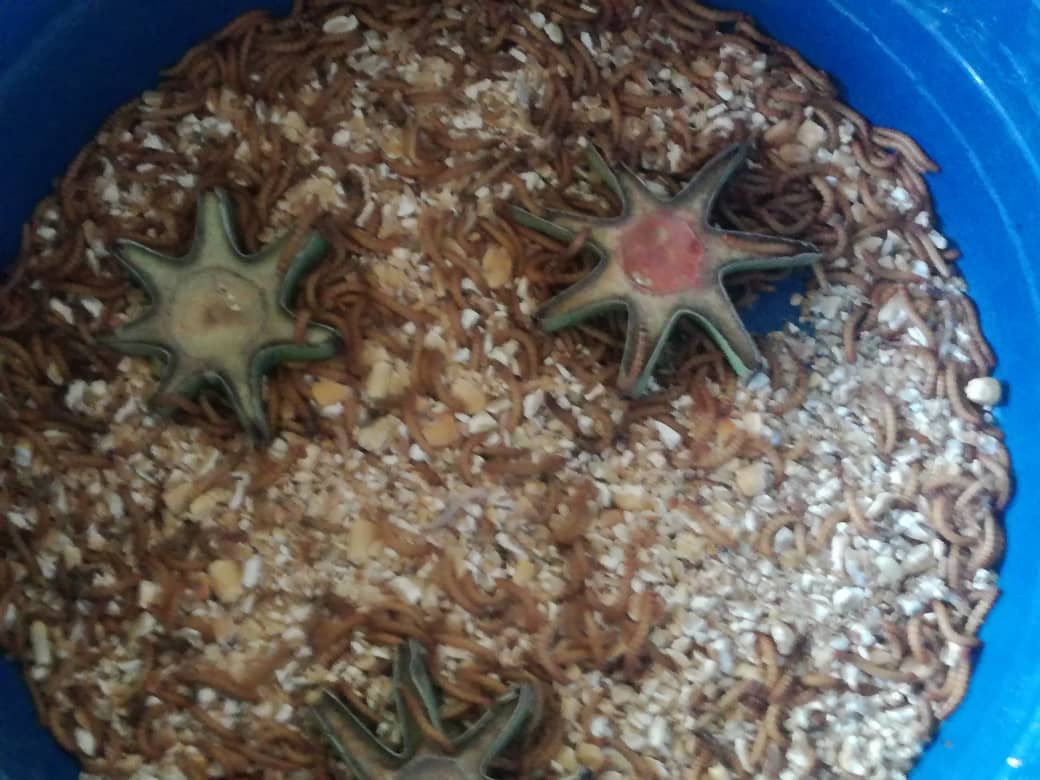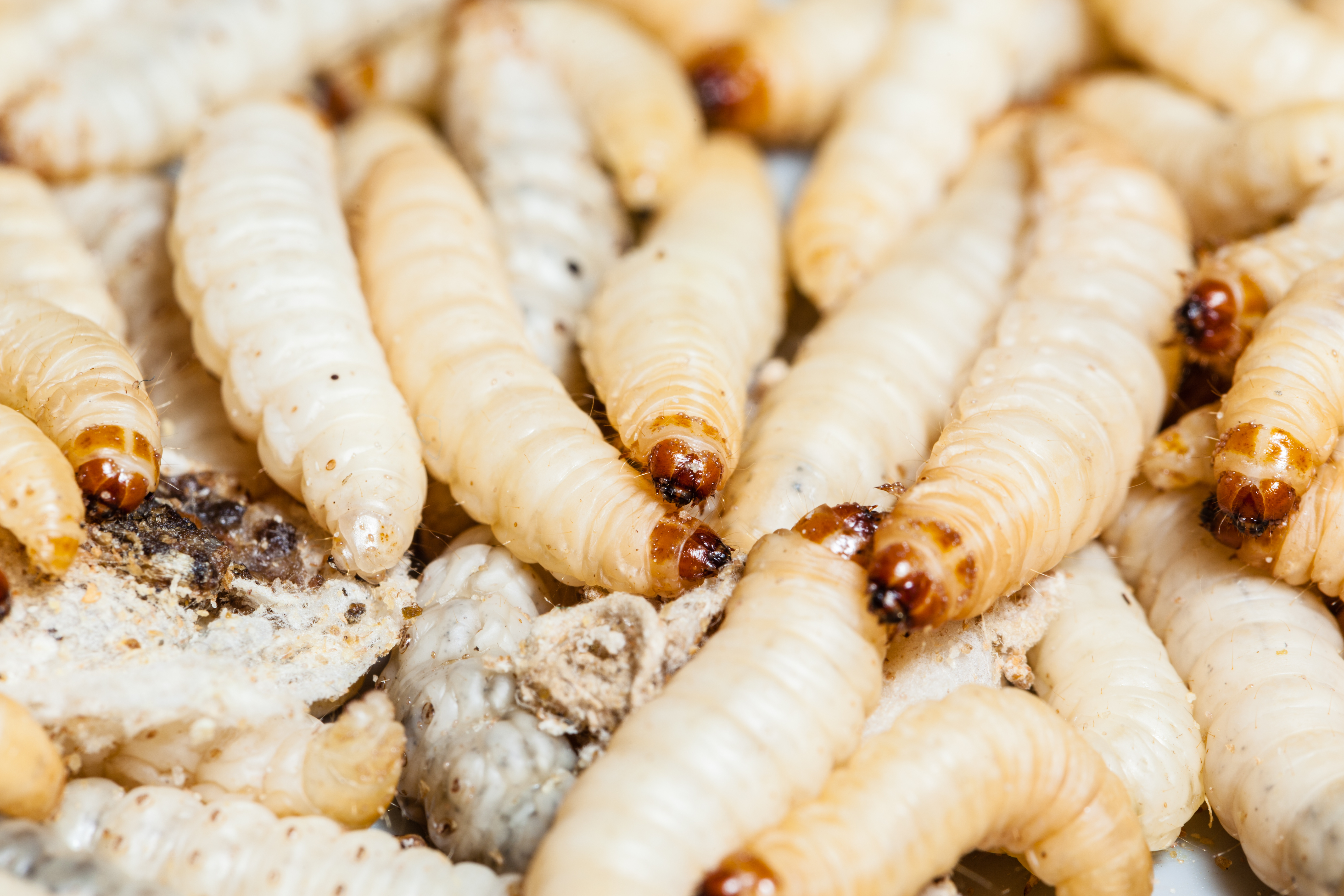



Why the yuck factor is holding back Zimbabwe’s poultry farmers
Poultry feed prices in Zimbabwe have trebled since 2016 amid a persistent shortage of locally grown soya and the resulting high cost of importing the protein source.The country requires about 220,000 metric tonnes of the crop annually for food, feed and other industrial needs but produces an average 60,000 tonnes yearly. To meet the shortfall, Zimbabwe spends up to US$200 million annually importing soya. In an economy that is perennially short of foreign currency, poultry feed prices have continued to rise. A 50kg bag of feed that cost 23 Zimbabwe dollars (US$7) three years ago, now costs about Z$66 (US$20).
Victor Marufu, of the Zimbabwe Organic and Natural Food Association (ZONFA), sees the soya deficit as a possible business opportunity. His organisation, which produces a range of organic foods for human and animal consumption including herbal treatments and supplements for chickens, started promoting maggots as an alternative protein source in the production of chicken feed. He has pitched the idea to farmers through workshops and social media but the results have so far disappointed him. ZONFA has been promoting the farming of the black soldier fly, and, to a lesser extent, the common housefly.
“We have tried but it has been discouraging,” he says. “I think our farmers, the ones who got land since 2000, are not taking their businesses seriously. Our message to them is: ‘You say you are struggling to feed your chickens, quail, ducks and the like because soya-based feed is too expensive for you; here is a cheaper alternative,’ but they do not look interested. They seem to be happy to remain small scale, complaining of high feed costs because with larger-scale chicken farming – 50,000 chickens plus – a local farmer will face viability problems if they rely on commercial feed that is soya-based. Our message has not gone through to the extent we thought it would. We are actually kept busy by farmers in Botswana and Zambia where we kind of introduced maggot farming.”

© Ian Nkala
A farmer who feeds his flock on maggot-based feed, says Marufu, can reduce his feed costs by 40 to 50 percent. “Feed costs account for 70 percent of the farmer’s costs in Zimbabwe and protein accounts for about the same percentage in terms of cost, so you can imagine what the impact of a cheaper alternative can do to their viability,” he says.
Maggots contain up to 60 percent protein compared the 35 percent in the more conventional soya.
Another advantage for maggots is that growers derive greater value from nothing. Depending on the size of the poultry operation, farmers can set up their own maggotries on their properties by putting pairs of large containers of the same size on top of each other and throwing in organic matter on the top container. (The waste can be dead chickens, vegetables, bird droppings and so on). The top container must be kept damp and may be kept open or gauze can be put on top. Flies and maggots thrive on the dirt and dampness, while keeping the top container open makes it easy for flies to fly in and lay eggs in the decomposing waste. If a farmer deposits eggs of a particular fly, such as the black soldier fly, and does not want to allow “contamination” by other species, he or she can put the gauze on the top container. This also prevents predation by birds.
The larvae that are produced after five to seven days will escape through holes made at the base of the top container, dropping into the bottom one. They are then harvested, dried and mixed with milled maize for starch and fed to the flock. The chickens also have an appetite for the worms on their own.
Larger-scale maggotries involve the building of a series of special ponds or tanks where dead matter or soldier fly eggs are thrown in dump conditions that allow them to grow.
In addition to maggots representing value being created virtually out of thin air, insect farming has the advantage of a quick turnaround time. According to Lovemore Ushe of Zimconserve, a community development organisation, the farmer just needs a week to produce higher-level protein compared to a four-month wait to harvest soya, which has an inferior protein content. Maggot cultivation, he said, does not take as much space for a farmer as soya does.
“Elsewhere insects for poultry protein is big business and their potential in reducing feed costs is well known but here I think farmers find maggots a disgusting health hazard,” he says. “Indeed they can be and our people consider waste to be 100 percent useless, but the value one can get from them is enormous.”
Zimconserve’s vermiculture arm is doing better than its maggot-production arm, says Ushe, but he argues that the latter is easier to set up and manage. The protein content of earthworms and maggots is almost the same and both can be useful in the production of organic fertilisers.
Valerie Nyaumwe, a small-scale chicken and duck farmer in Kensington, near Bulawayo, Zimbabwe’s second largest city, cannot stand the sight of any wriggling insect.
“They can make us more viable,” he admits. “I have read much about them and their advantages but I would rather continue with what I have been doing all along.” Up to now, she has been feeding her birds on soya-based feed. “I cannot look at a maggot,” she continues, “worse if they are a drumful. I can’t stand the smell also. If we had a larger property I could have attempted growing sunflower or soya to formulate feed here but I don’t.”
Following the 2016 drought there had been a certain amount of hype around the idea of maggot farming, says Marufu. But a further development that indicates this interest has now fallen away is that a memorandum of understanding that ZONFA had planned to sign with Agrifoods, one of Zimbabwe’s top stockfeed makers, is still to be signed, three years on.

The 2016 drought was Zimbabwe’s worst in 26 years. Another one, which is less severe, has occurred this year and might cut the consistently low soya output even further. After conducting a preliminary crop assessment in February, the government announced that some 900,000 tonnes of maize are expected, which is half of the country’s yearly consumption needs. No projection has been announced on soya but the harvest is set to be lower.
In addition, the government, in March, increased the maize price for stockfeed manufacturers from Z$390 per tonne (US$121 per tonne) to Z$746 per tonne (US$233 per tonne). The drop in soya and maize output and the upward review of the maize selling price should push stockfeed prices higher, posing more viability constraints on livestock farming.
“Maggots are a possibility and can help, but the biggest problem in this market is that there is no commercial production of them to assure farmers a reliable supply – especially to those who cannot farm the worms on their own,” says Chrispen Sukume, an agricultural economist at the Livestock and Meat Advisory Council.
“Also, despite the activity we saw some two years ago, there are not enough skills and technology in maggot production locally. However, we must realise that maggots and soya are not the only source of protein for birds. We have to actively explore the potential of white sorghums, sunflower, cow peas and other legumes as alternative sources of protein, given the conditions that have constrained soya growing and the poor maggot take-up.”
"Maggots contain up to 60 percent protein compared the 35 percent in the more conventional soya"
--
Zimbabwe does not allow the growing of genetically modified soya which is traditionally high-yielding. As a result, farmers are forced to grow GM-free soya, realising an average of not more than 2 tonnes per hectare. This makes it difficult for local output to meet national demand, says Sukume.
Local manufacturers importing soya from neighbouring Zambia, which allows GM soya growing, pay a landing price of US$500 per tonne. The cost works out to up to Z$3,000 per tonne if an importer sources foreign currency from the parallel market where it is readily available (but at a premium).
“To be able to respond to this [the high import price for soya and low local output], growers must improve productivity from 2 tonnes per hectare and less or convince the government to permit them to grow GM soya,” says Sukume. “If that fails, farmers and stockfeed manufacturers might need to look at maggot more seriously.”








